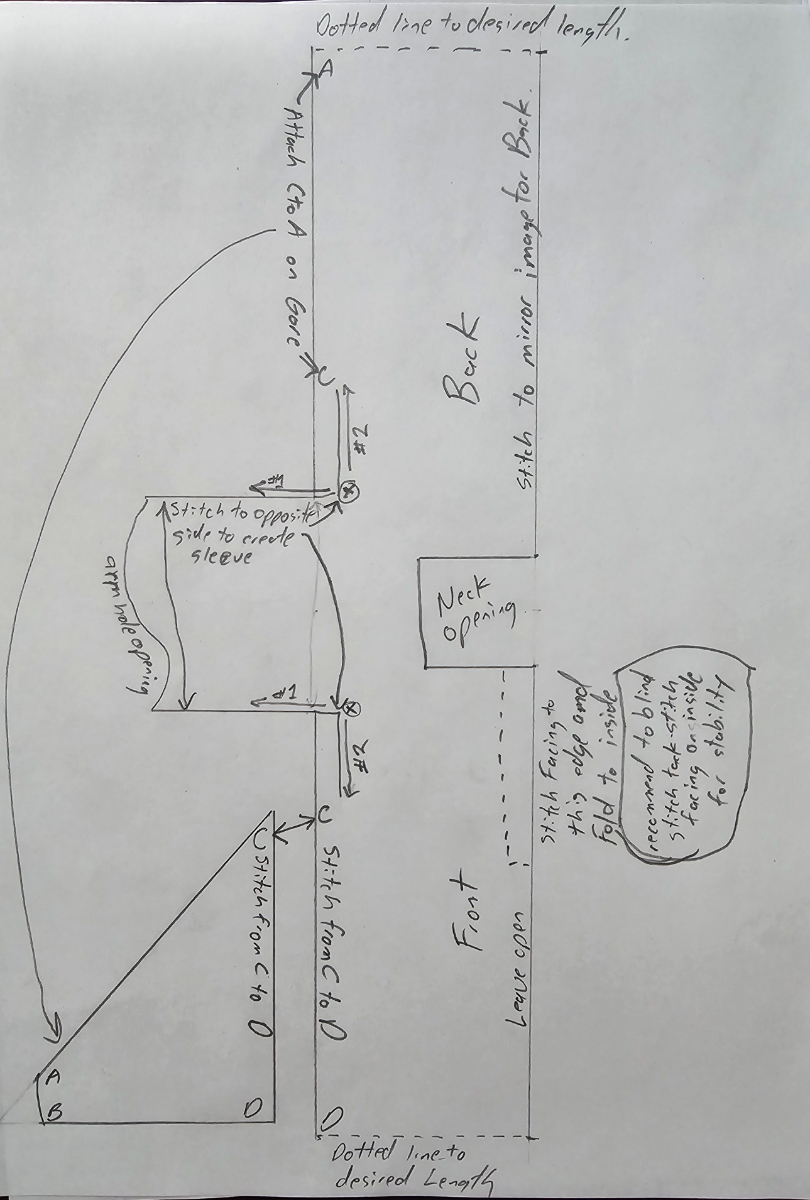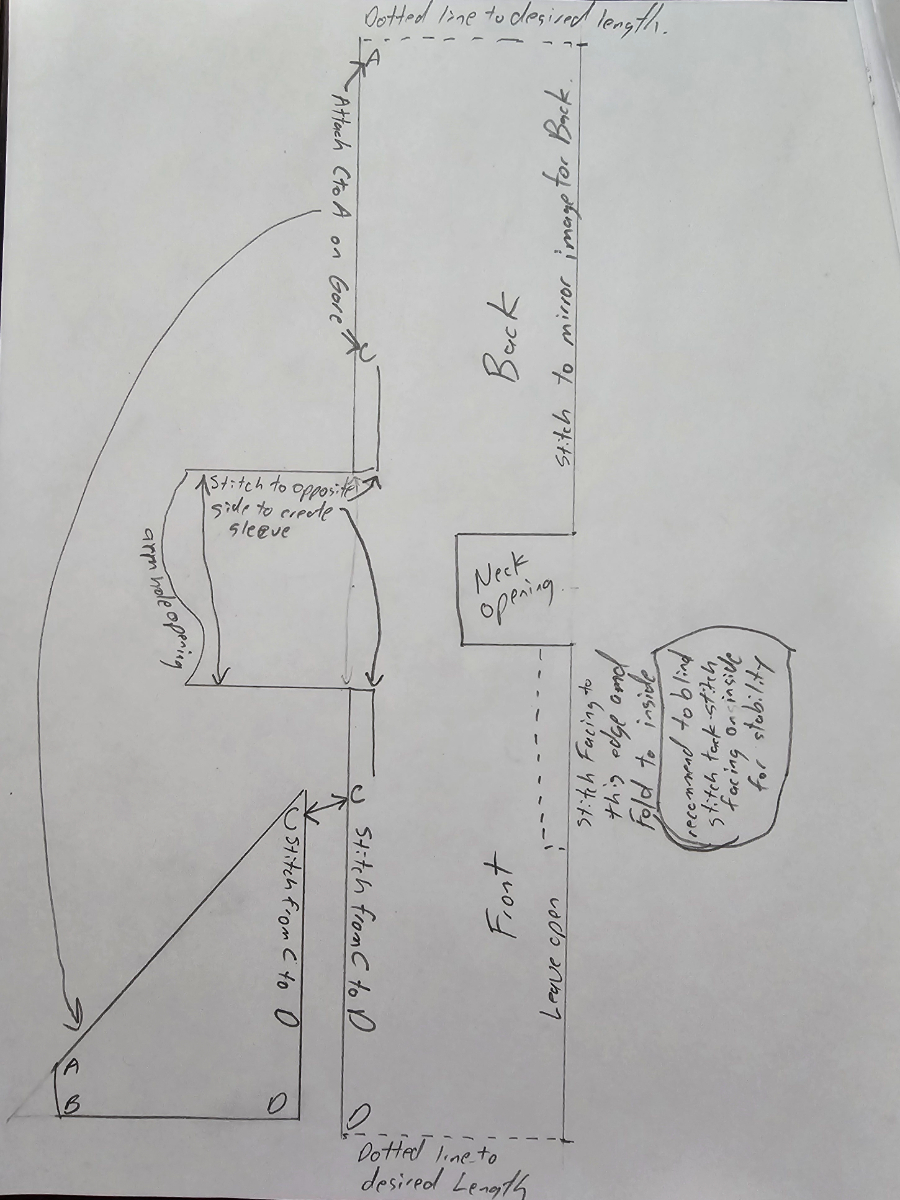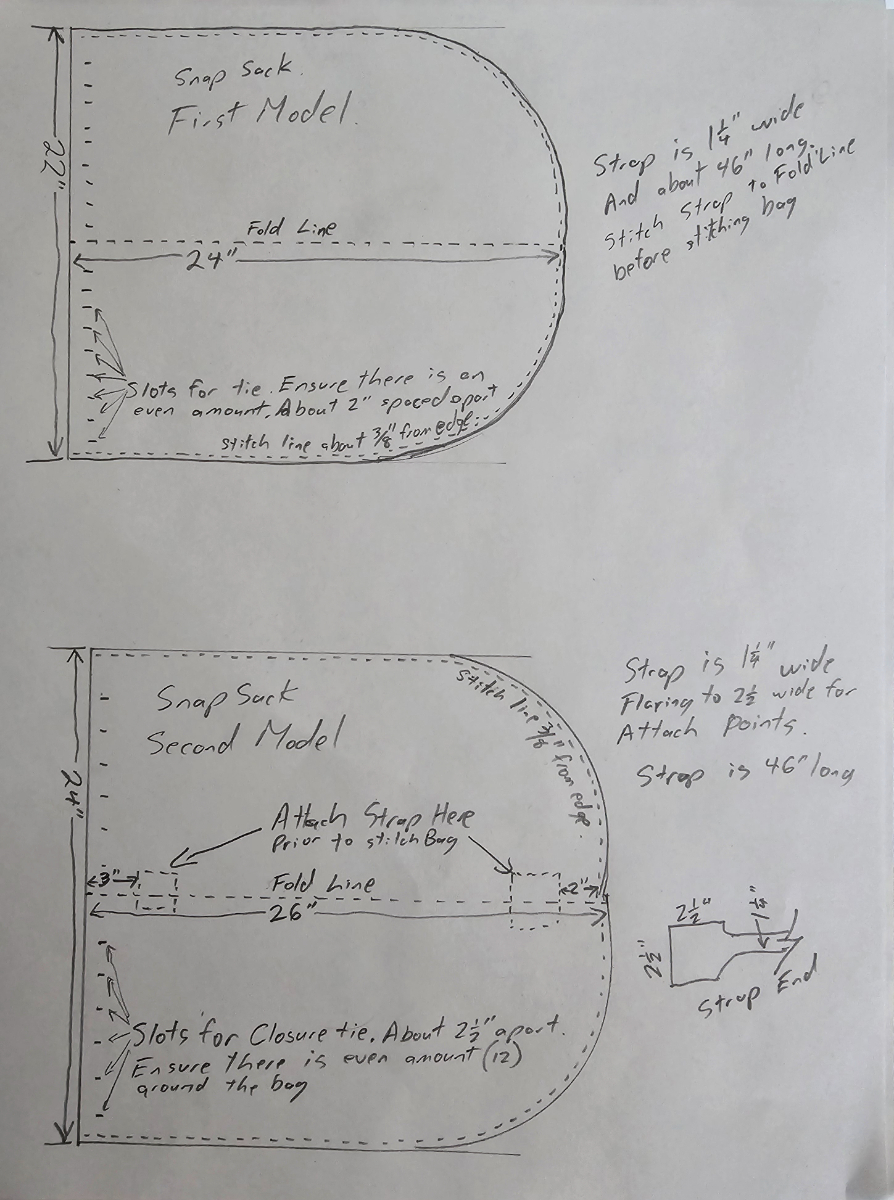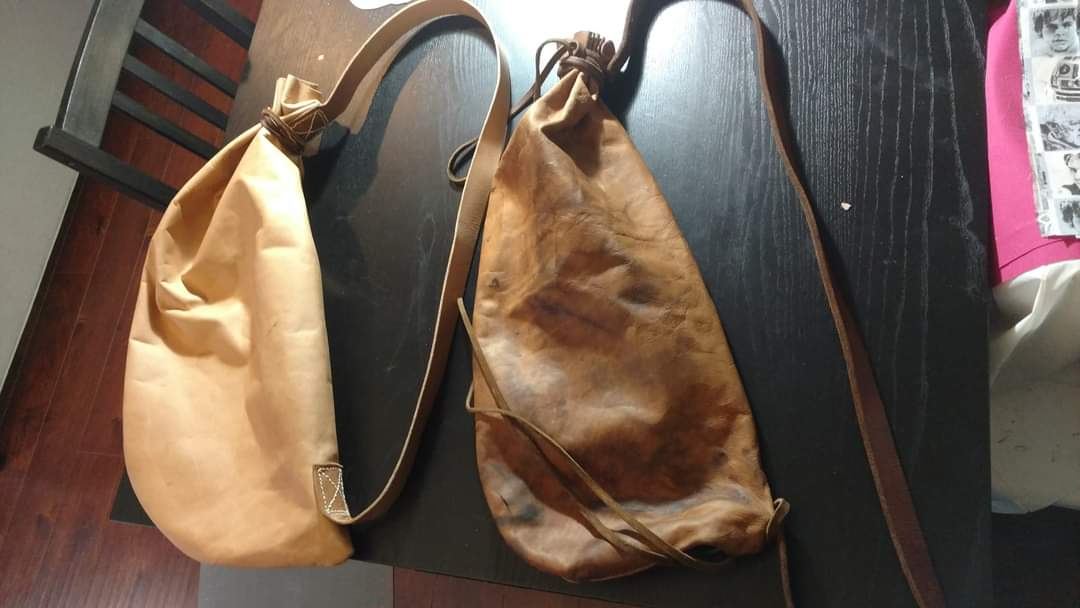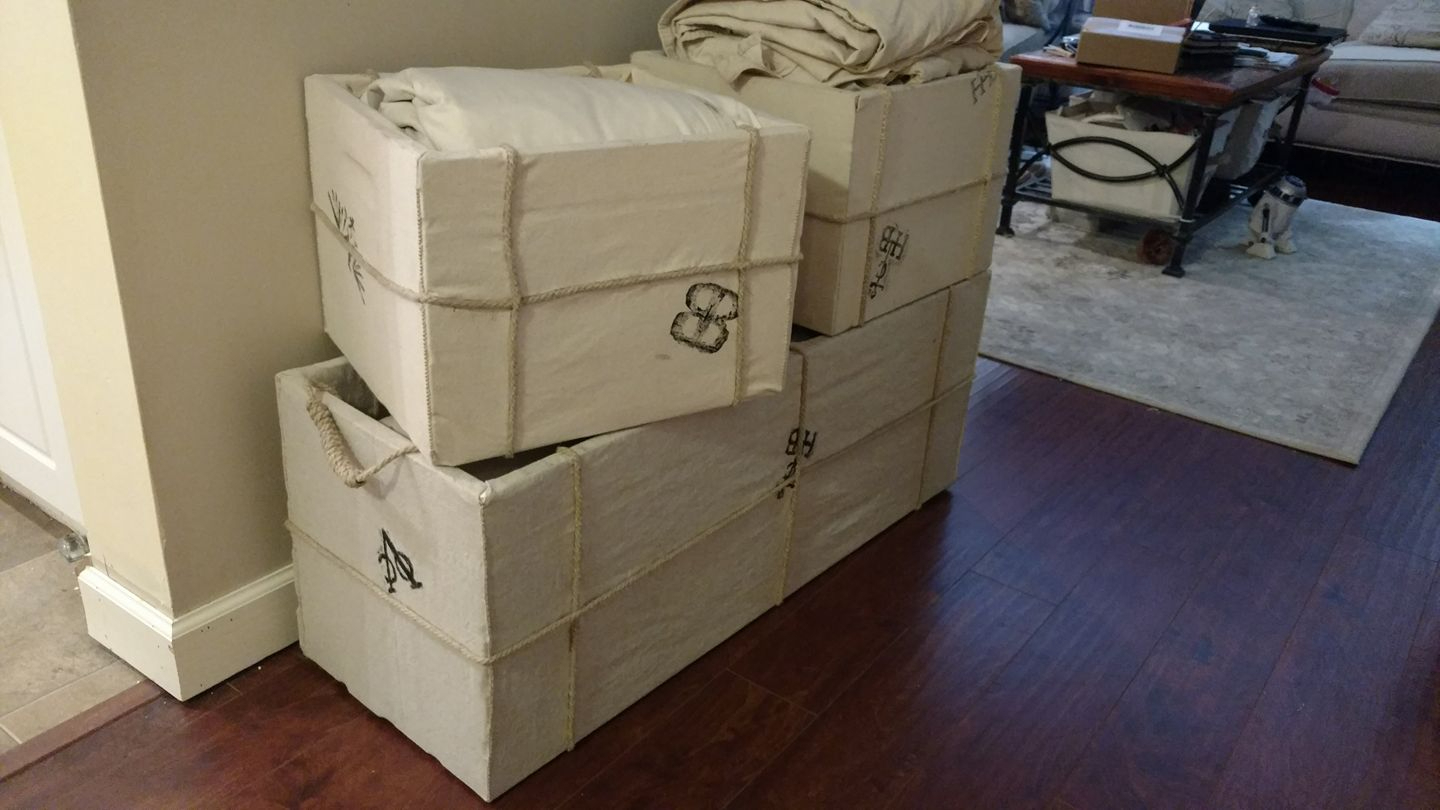-
Posts
2,682 -
Joined
-
Last visited
Content Type
Profiles
Forums
Events
Gallery
Everything posted by michaelsbagley
-
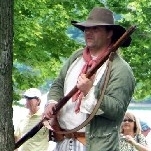
Making a full kit in four months
michaelsbagley replied to Tudor MercWench Smith's topic in Crafting Kit
Awesome work. You should be proud. Very little is more difficult than tailoring a fitted garment to oneself. -
I've participated in this most years I have been active on the forum... so why should this year be any different. Count me in.
-

Making a full kit in four months
michaelsbagley replied to Tudor MercWench Smith's topic in Crafting Kit
What Mark said, the wrinkles make it difficult to truly tell, but at a glance, it is looking very much on the right track. -

Top 10 items for your pirate kit
michaelsbagley replied to Gentleman of Fortune's topic in Thieves Market
These are still the best comics ever -
This is going a little bit more off the rails.... But I have often contemplated getting back into home-brewing and using 2.5 to 3 gallon corny-kegs... and then hiding said small corny-key in a period barrel (I have one the correct size) with a small Co2 cannister (like a large paintball gun size Co2 cannister).... Perfect way to have beer on tap at an event and keep it sanitary and period looking. It would be a small investment in money (for the half-size corny-kegs, which are more expensive than the standard size 5 gallon ones that are easier to find)... and the rest of the accessories required for kegging home-brew.... but it is an idea that keeps cropping up in my head every year or two. I really need to stop contemplating the idea, and actually hop to it.
-
You say that like it's a bad thing... 😇
-

Making a full kit in four months
michaelsbagley replied to Tudor MercWench Smith's topic in Crafting Kit
What facet of the sleeve shape isn't sitting right with you? I've noticed the "suggested" pleating as per the out-of-box (bag) pattern tends to be too much (too snug) for almost every one I have made.... So I can suggest up front, easing the pleating on the sleeves a fair bit. Is the shape the opening? How it has what might seem like a steep arc to it? (going to go on a limb and answer to this assumption, let me know if I was wrong so I can try and be more helpful)... But the way the opening arcs, allows the cuffs once attached, to hang in a manner that will have the outside slightly lower than the inside (when your arms are comfortably hanging at your sides) as is depicted in much of the period art-work. I don't think there is any function to this, I think it is just the "fashion of the time" being different from modern fashion/comfort standards, and so seems weird. -
Damn, that redware is an awesome find at an amazing price. Great score!
- 62 replies
-
- thrift
- thrift shop
-
(and 1 more)
Tagged with:
-
So this came up on my soc media feed today, a rather great and detailed YuToob interview with our very own Barber-Surgeon.
-

Making a full kit in four months
michaelsbagley replied to Tudor MercWench Smith's topic in Crafting Kit
I'm not a culinary expert, but I think allum is used in baking, especially with merangues or other things with lots of whipped egg as an agent to help preserve/prolong the frothing of the eggs (and likely other frothy things). I thinks it's universally optional, but some "more serious" bakers prefer it for the slightly improved results. -

Making a full kit in four months
michaelsbagley replied to Tudor MercWench Smith's topic in Crafting Kit
Oh, and I have found that as long as a working-class/common-woman's mantua can be cut and constructed from 5 or less yards of fabric. I think we managed to scrape a knee length (barely below the knee) mantua out of just over 4 yard of fabric once.... but this was after all of the oppsie-discoveries of how long to cut the front/back and gores and other parts. Cheap fabric was crucial in mathing out that. -

Making a full kit in four months
michaelsbagley replied to Tudor MercWench Smith's topic in Crafting Kit
One last word on construction... The turning gore/gusset: I have never needed it for any "working class"/common-woman's inspired mantua (think Laroon's Cryes of London rather than the fancy women's gown). The primary gore is so long, that unless you are making "a lady's" garment that has a train or requires bustle, the main gore will be cut short enough the turning-gore will not be required. Wish I had advice on dying. It's been something that has always fascinated me, and I've picked up tidbits of trivia about it, but I have no real helpful knowledge on. As for linen v wool. I've made almost equal amounts of mantuas of the two fabrics. I kind of prefer using wool. I find it adds more structure to the construction. Using linen is fine, and as long as you use a med-weight or heavier linen it should be fine -
Adding this video reference from the Dutch you toober Allemansend. This is a great tutorial and historical notes regarding snapsacks and their construction. The focus is a little earlier than what we focus on here, but valuable and useful all the same.
-

Making a full kit in four months
michaelsbagley replied to Tudor MercWench Smith's topic in Crafting Kit
Yay, glad Mary and my advice and scribbles were able to help. And yasss, having a step by step photo guide would be invaluable. The making of this garment comes up as a point of frustration every couple of years, so having a good source of guidance to refer people to would be gold (because let's face it, the Farcebook costuming groups have nothing to say about this garment other than a bunch of hate for the RH pattern, and more vitriol in that vein, some of which might be warranted, but none of which actually helps people to make one) -

Making a full kit in four months
michaelsbagley replied to Tudor MercWench Smith's topic in Crafting Kit
Slight revision to head off a future pitfall I hit the first time I made one of these. I added a couple of Xs (in a circle) to this diagram. Start sewing from the X to the sleeve opening, then sew from the X down towards the bottom hem stopping at the bottom of the upside-down L shaped slit. Then start stitching from C to D to attach the front to torso to Gore C to D. (Do NOT stitch front of torso to back of torso at this time!) Then stitch back torso C to A to gore C to A. The Back C mark is slightly off, so there should not be any pleats, or puckers, or gather on the back C to A (justor just above) seam. There will be a narrow strip of fabric hanging. Ignore it. It is superfluous. It can just be tucked inside the garment when completed and ignored, or once the garment is complete, it can just be cut off. -

Making a full kit in four months
michaelsbagley replied to Tudor MercWench Smith's topic in Crafting Kit
One last word on on this that will hopefully help you (or some other theoretical person in the future)... Think of the mantua as a "T-Tunic" with two side gores regarding assembly. After you get the main pieces together using this hopefully conceptually easy mindset, the real work lays in the pleating, which is pretty much taking a floor length (or however long you make it) T-Tunic, and then pleating it to fit, and the style of the 1690s-1720s. -

Making a full kit in four months
michaelsbagley replied to Tudor MercWench Smith's topic in Crafting Kit
Whew... It took me at least 2 days to sit on this, and try and puzzle out in my mind what is going on. The (hopefully) easy statement that will hopefully fgive you the moment of enlightment is: The C mark on the front of the main torse of the pattern, and the C mark on the back of the main torso part of the pattern, and the C mark of the main gore piece should ALL match up. Think of the C as under-armpit joint of the garment. It appears that you lined up the bottom of the gore, with the bottom end of the main torso portion, and stitched from bottom-to-up on the gore. Hence why the gore piece is confusing you, as it looks like because of that direction, the top point of your gore is up into the neck-hole.... which is never going to work. Start all of your sewing, stitching together of the main pieces at the C mark, and I think you are going to be in a better situation. Rough sketch diagram to follow after poting this. -

Making a full kit in four months
michaelsbagley replied to Tudor MercWench Smith's topic in Crafting Kit
Don't surrender! Just to make sure I am understanding what you are struggling with, and so I don't write a novel to describe a whole series of steps rather than just the one or two you need. Is it the main gore for the gown you are struggling with? Or the turning gusset/gore? Taking what you typed above, it sounds like the "primary" gore is the problem. Are you sewing the gore from the bottom hem up? (whether from the back or front edge), or stitching it in from the top point down? -

Making a full kit in four months
michaelsbagley replied to Tudor MercWench Smith's topic in Crafting Kit
Do you have a copy of Janet Arnold's "Patterns in Fashion 1"? Page 71 has the cutting and pleating diagram for the Mantua the RH pattern was based on. There are additional notes there that may help shed more light. If you have it, and did not find it helpful, or just don't have easy access to it, I can try and scribble a diagram or two to try and help. Just let me know. -

Making a full kit in four months
michaelsbagley replied to Tudor MercWench Smith's topic in Crafting Kit
The pleating requires: A] Either two people, the person being fit for the Mantua, and one to do the pleating and pin it into place (so it can later be remved and sewn to the correct size) B] A good tailors dummy exactly your measurements to do said pleating/pinning upon (again before removing to stitching once the pleating is done) To step back and abstract on this statement, the pleats should NOT be done to the size depicted in the pattern. Those are guides to illustrate generally what the pleast is aiming for, however the ciritical point of the pleats (on the torso at least) is to fit the mantua to the wearer (on top of their under-pinnings such as shift and bodys/stays). The pleats on the arms and other parts, are just decorative, and as long as those pleast don't cinch the garment in too much to fit your arms or what-not, they can be done as drawn, loosened, or tightened to your tastes. Hopefully the above helps. I know it isn't clear diagrams or a video (I know as a visual learner those tend to help more).... but hopefully my experiences making over half a dozen of those things, from that exact pattern will help. -
Resurrecting this old thread. Reading through the old posts, it appears it was originally about canvas snapsacks, but for most of the 17th century leather seems to be what is most common for snapsacks. The evidence for canvas bags of this type starts to show up fairly early in the 18th century, so I would definitely not naysay the use of those for GAoP... in fact with my general philosophy that gear did not "turn on a dime", the use of either or both would be great for the GAoP, with those leaning towards earlier portrayals should favour leather, and that stick mostly to the end should favour canvas. Speculative rambling aside, someone recently asked me about mine on that farceBook social media site, and I drew up these diagrams. I'm sure my diagrams pretty closely mirror that of the "buckskinner" forum mentioned above. Most moderately skilled leatherworkers should be able to duplicate this project easily, but if this is a first or early leather project that you are trying to take on, don't hesitate to ask question. Also, feel free to merge this topic with the closey related one -> (or vice-versa)
-
I started with the "heavy duty" crates that use to be found at craft stores (pick your local chain)... However, I've not seen those "heavy duty crates" in the crafts stores in years. The first and foremost advice I can provide, is to NOT to use the typical craft store crates for this type of project. The typical crates are fine for college dorm storage, and other light-duty stuff.... but faux-reenactment bales WILL get sat upon (and take other hard wear) which the standard craft store crates WILL NOT stand up to. While it will increase cost and/or level-of-effort, build wooden slat-based crates out of whatever cheap dimensional 1"-by wood you can find/buy/acquire (through definitely legitimate means). In the attached photo there are three of them. Two built up from the "heavy duty" crates, and the long one I made from scrap lumber to be a double length one (it doubles as a bench, as well as storage crate for my pavillion tent). All three of these examples lack an enhancement I made to a later one I made, and that enhancement is putting some sort of batting between the wood frame and the canvas. Wife was resistent to the idea of adding batting, because of concerns with weather, and them taking forever to dry if wet, and the risk of mildew. The ones shown here are 9 years old now, and have picked up a lot of dirt and mild staining since, but are still going strong. The one not depicted with the batting, is about 6 or 7 years old, and has been used regularly since, and survived a couple of bad-weather events, with no signs of mildew or other wet related damage. Which has me thinking of going back removing the canvas from these in order to add the batting. The batting makes them work a lot better as seats. We pack most of our gear for events we do the "bigger setup" with in these crates, and it makes setup, break-down, and storage of gear a lot easier. These get stacked in a corner of the garage for most of the year, and when we prep for an event, we now most of what we need is in these. (originally we stored spare tents in them, but since we gave all of those away since we no longer run events, they are now used for our gear). In fact, I think I need to make another one or two for use exclusively for when I travel alone with the smaller/lighter setup, as it just makes transporting gear that much more convenient.
-
Silas Thatcher - Nov 2023 Silkies McDonaugh - Spring 2022
- 16 replies
-
- dearly departed
- passed
-
(and 2 more)
Tagged with:
-
I second the recommendation. I've been a player of this company's first pirate miniature game for years now, it's more of a large skirmish style game (20-30+ figures per side, although somwhat scalable).... I am even more excited about the new game than I was the original... having a small "band" size game (4 to 7 figures per side in an average game) is a lot more exciting (and likely a better entry point into the larger skirmish game, for those inclined). I too was lucky enough to squeeze in a demo at Adepticon, and it was great, and fast playing.


